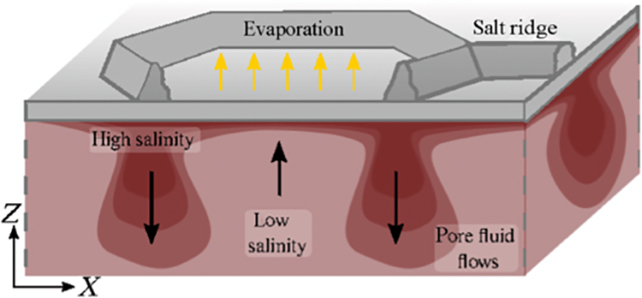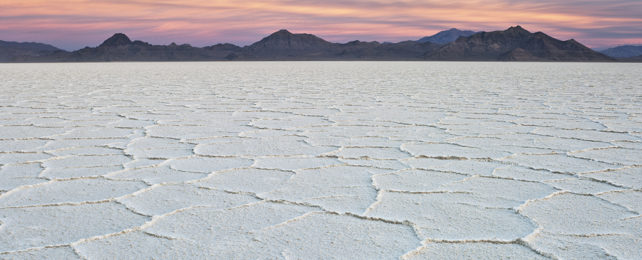The spectacular, hexagonal shapes texturing salt deserts such as the Badwater Basin in Death Valley, California, and Salar de Uyuni in Bolivia have long mystified travelers and scientists alike.
Considered by some to be the result of cracks forming as the briny surface dries out or pushes against itself as the salt precipitates and expands, no one explanation satisfies the uniform size and arrangement of the ridged cells.
A new study provides the most plausible explanation yet. Based on a mix of field research and numerical simulations, an international team of researchers suggest contrasting concentrations of salt-water solutions circulating in donut-shaped currents could be responsible.
"This is a great example of curiosity-driven basic research," says physicist Jana Lasser from the Graz University of Technology (TU Graz) in Austria.
"Nature presents us with an obvious and fascinating puzzle that stimulates our curiosity and thereby prompts us to solve it – even without any direct further possibility of application in mind."
Here's what the scientists suggest is happening: brine sitting close to the surface is warmed by the Sun, causing a fraction of its water to evaporate into the air. As water is removed, the remaining solution gets saltier, increasing its density.
This relatively dense solution of salt water is heavier than the fresher, less dense salt water below, causing it to sink as the low salinity water rises to replace it.

In salt deserts, the researchers suggest, this happens extensively across a wide area, with each convection 'roll' squeezing tightly against neighboring cells. Ridges of crystalized salt then gather in places where the water is saltier and sinking, creating the familiar honeycomb pattern, with fresher water evaporating from the flatter spaces in between.
The team saw this happening in soil in the lab, which was combined with analyses of samples taken from salt deserts. The researchers were also able to capture a time lapse video (below) of the phenomenon happening in Owens Lake in California.
"Our simulations, together with the field studies, give a consistent picture," says physicist Marcel Ernst, from the Max Planck Institute for Dynamics and Self-Organization in Germany.
"The driving mechanism for pattern formation is the convection-triggered rise and fall of salty water in the soil beneath the salt crust."
While previous studies had suggested that the repeating ridge patterns could be created as the salt crust dries out or buckles over time, these earlier hypotheses didn't really explain the uniformity of the shapes or their appearance in many different regions.
The new proposal stands up better to scrutiny, the researchers say. It matches the consistent size of the shapes (1 to 2 meters or 3.3 to 6.6 feet), and the speed at which they are known to form.
What's more, it can help scientists in their calculations regarding how much dust mineral-packed dust these deserts are giving off: that's important in terms of the rate at which clouds form and how minerals are transported through the air to the oceans.
"What we've shown is that a simple, plausible explanation is there, but hidden beneath the ground," says physicist Lucas Goehring, from Nottingham Trent University in the UK.
"Although beautiful, wind blowing over salt deserts is a major source of atmospheric dust, and our results will help understand processes like this in desert environments."
The research has been published in Physical Review X.
